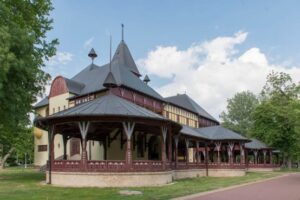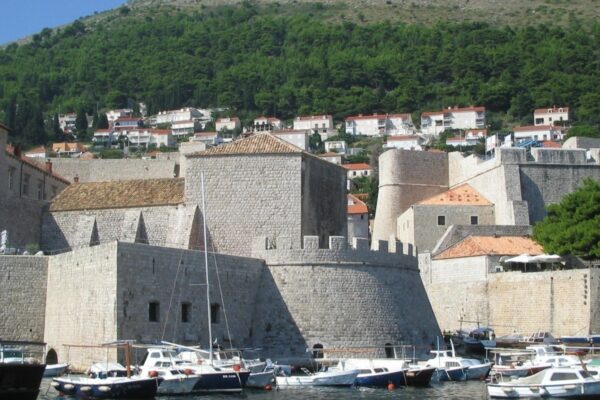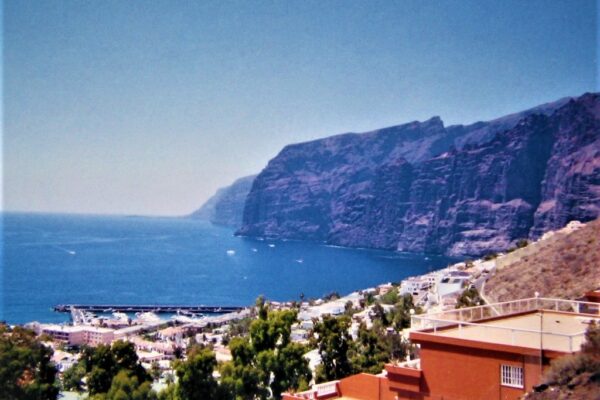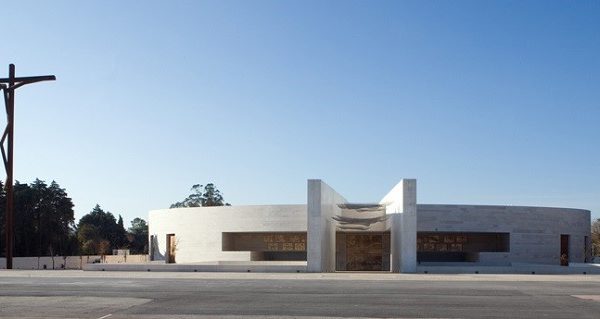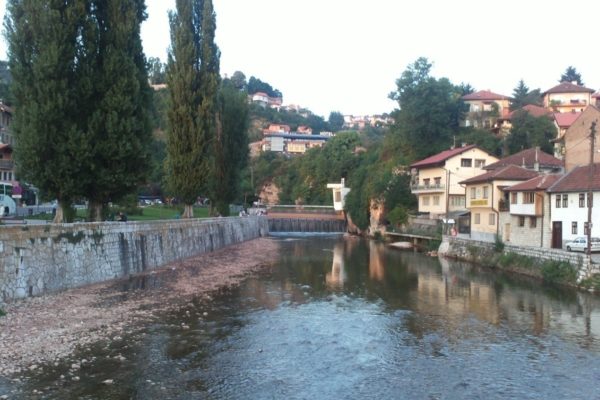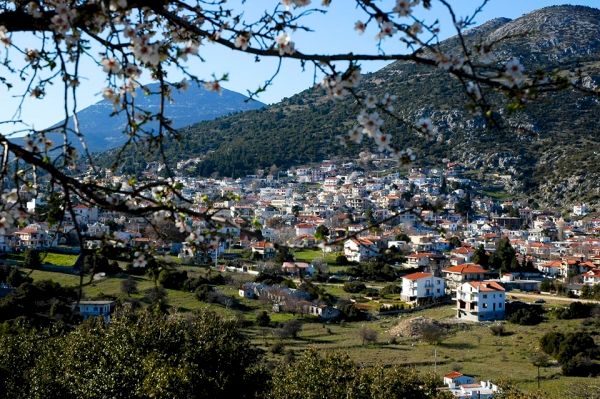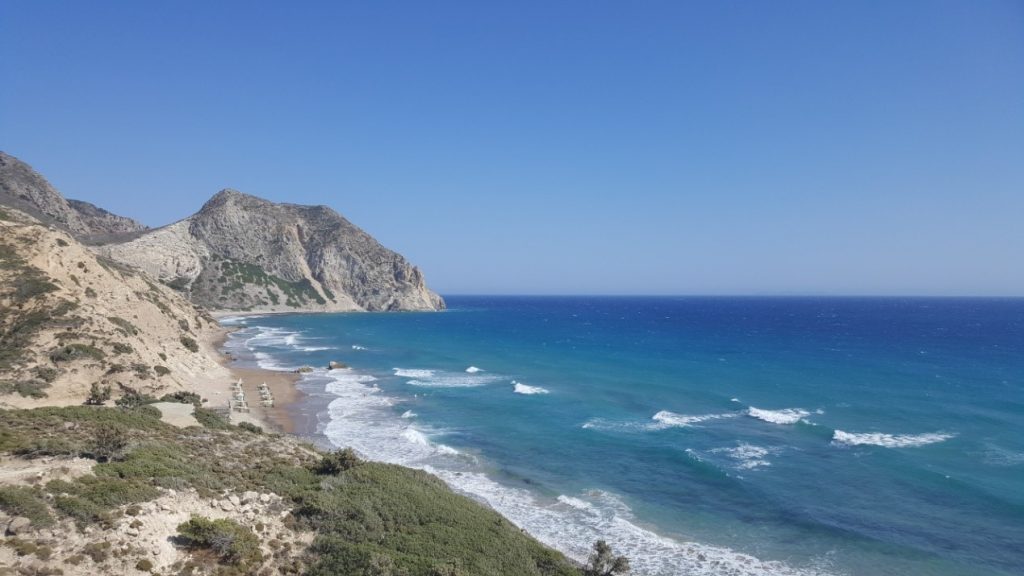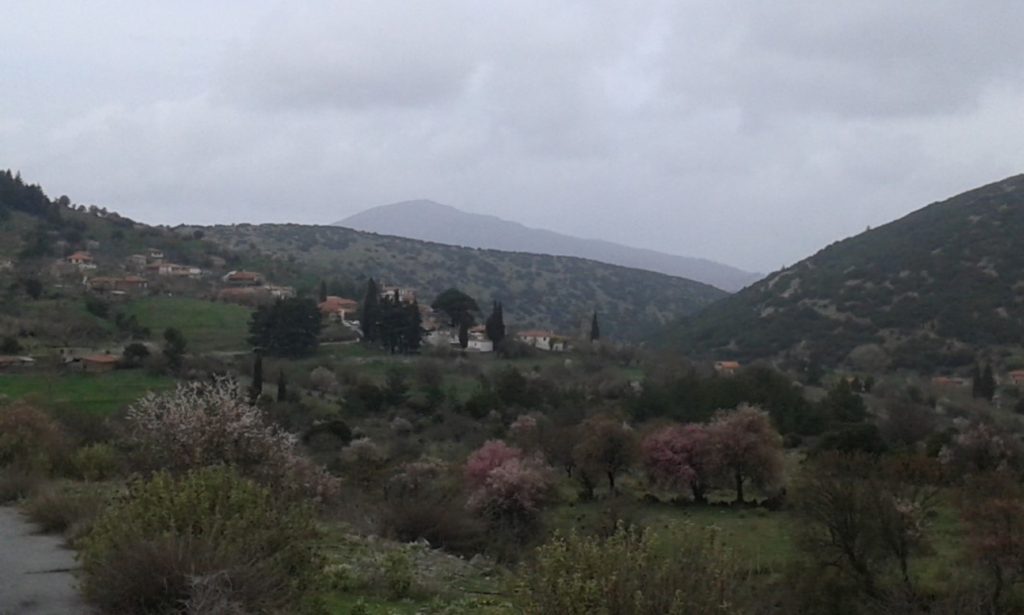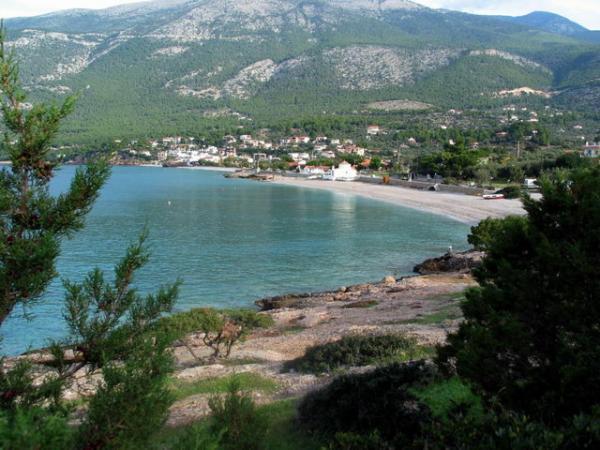Subotica, The Art Nouveau City of Serbia
TOUR OF BUILDINGS OF ARCHITECTURAL INTEREST
- town hall Subotica
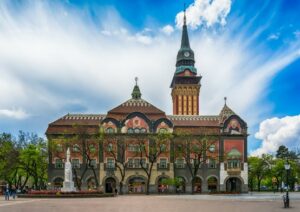
Source : https://visitsubotica.rs
The town hall (Serbian : Town house) it is located in the central square and is the symbol of the city. It was built between 1908- 10 in designs of Hungarian architects, Marcell Grim (1868-1944) and Jakab Dezső (1864-1932). It has been characterized as Protected Cultural Monument Of Extreme Importance and is considered a masterpiece of Hungarian architecture. The Hungarian Art Nouveau started by the Hungarian architect Ödön Lechner (1845-1914) who used many decorative elements in his works, such as tiles Zsolnay. The town hall includes decorative elements of terracotta tiles Zsolnay, with motifs from Hungarian folk art (flowers, peacocks etc.), and stained glass windows from the workshop of the Hungarian artist Miksa Róth (1865-1944).
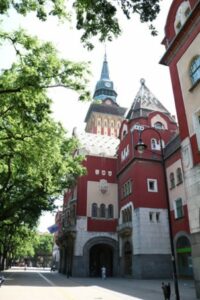
THE Tower of City Hall with the clock, height 76 m., it is part of the impressive mansion. Address: Freedom Square, http://www.subotica.rs
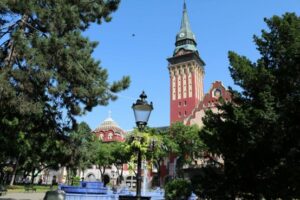
In the central square of the city they also stand out Blue Fountain (2001), with Zsolnay tiles, and the statue of the Tsar Jovan Unexpectedly located opposite the National Theater, at the beginning of Korzo Street.
- Synagogue Subotica
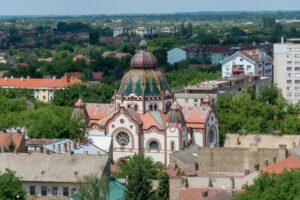
Source : https://visitsubotica.rs
It was built between 1901-1903 by the Hungarian architects Marcell Grim (1868-1944) and Jakab Dezső (1864-1932), who also designed the town hall and the buildingSDK» (1912), on Korzo Street 5. The outside height is 40 m., the inside 23 m. and the dome diameter 12,6 m.
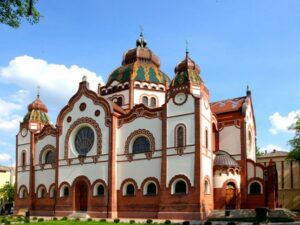
Source : https://visitsubotica.rs
It is the only Synagogue building in Europe with Hungarian elements Art Nouveau. The stained glass windows are by a Hungarian artist, Miksa Róth (1865-1944) and the ceramics with Hungarian folk art motifs, from the famous ceramics factory Zsolnay, region Pecs Hungary. belongs to Protected Cultural Monuments of Exceptional Importance. Address : Jakab square and chamber 6
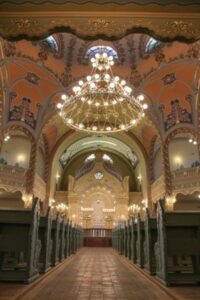
- Raichle Palace
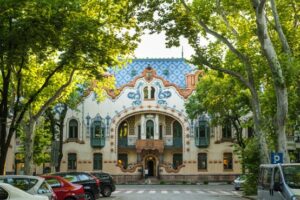
Source : https://visitsubotica.rs
The Raichle Palace (today Gallery of Contemporary Art) was designed between 1903-4 by the Hungarian architect Ferenc Raichle (1869-1960), as a residence for himself and his family. It is the most typical example of Hungarian architecture Art Nouveau, as it is adorned with decorative motifs from Hungarian folk art.
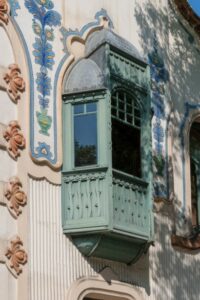
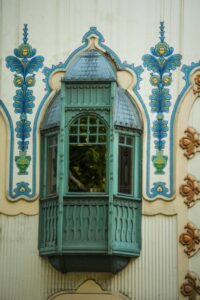
Raichle Family Palace – Source : https://visitsubotica.rs
belongs to Protected Cultural Monuments of Exceptional Importance of Subotica. Address: Ferenc Rajhl Park 5, https://sgsu.org.rs.
The inner courtyard of the building is used by the cafe- restaurant "Boss» (Matthias Corvinus 7-8, https://www.bosscaffe.com).
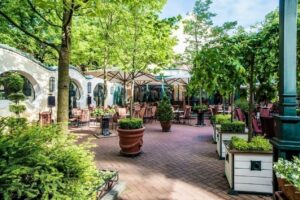
Raichle Palace – Boss Caffe – Source : https://www.bosscaffe.com
- Subotica Savings Bank Palace
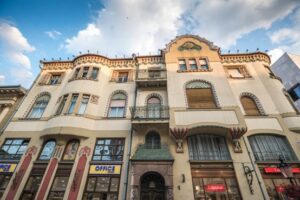
Source : https://visitsubotica.rs
The corner building was designed in 1907 from the Hungarians Marcell Grim (1868-1944) and Jakab Dezső (1864-1932). It is a representative sample of Hungarian Art Nouveau, with decorative ceramic tiles Zsolnay, depicting flowers in bright colors.
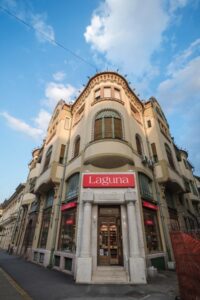
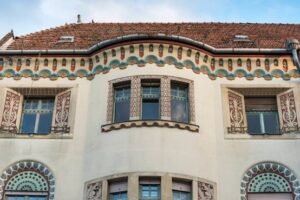
Source : https://visitsubotica.rs
The ground floor, with the large glass surfaces, it served as a bank and restaurant while the upper floors were residential.
Address: Promenade 4
Today's street Promenade, since its end 19th authorities 20th century. was the main street of the city, with the most impressive buildings, most representative samples of Hungarian Art Nouveau.
- Salomona Sonenberga Palace
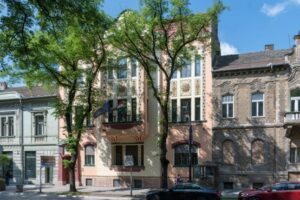
Source : https://visitsubotica.rs
The palace Sonenberg (today full of impressive mansions Consulate of the Republic of Hungary), designed in 1910 by the architects, Izidor Strassburger and Lajos Gombos. The Solomon Sonenberga Palace consists of two buildings, the first on Đure Đakovića street 3, with elements of Hungarian Art Nouveau, such as decorative tiles Zsolnay, with plants pattern, and the second on Matija Korvina street 10, with modest Viennese decoration Art Nouveau.
Address: Đura Đakovića 3
- Manojlović Palace
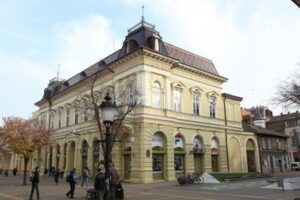
Source : http://www.kulturput.rs
The two-story corner palace was designed by the city's famous architect, Titus (Tit) Mačković (1851-1919), for the rich Serbian intellectual from Subotica, Samko Manojlović (1844-1914).
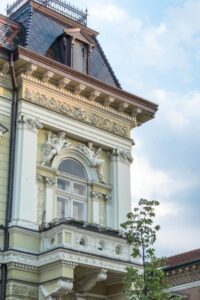
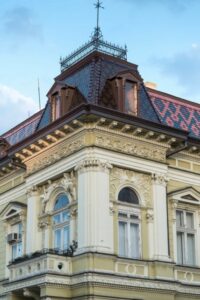
Source : https://visitsubotica.rs
It was built 1881, with many elements Neo-Renaissance, as the Tit MaCforgeÆ he was an ardent supporter of this art.
belongs to Cultural Monuments Excellent Important of Subotica. Address: Promenade 8
- Hotel Adolf Halbror
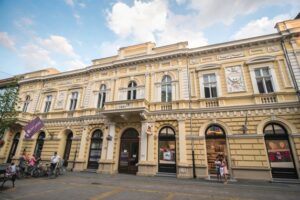
Source : https://visitsubotica.rs
The Hotel Adolf Halbror or National Hotel designed in 1897 by architect, Géza Kocka, for the rich man Sea of Halbror. The building also known as Zagreb to your head (bistro) today it houses the cosmetics department storedm». The 1905 rebuilt by the architect Ferenc Rich (Rajhl) (1869-1960), in style Neo-Renaissance.
belongs to Protected Culturally Excellent Monuments Important. Address: Promenade 10, Subotica
THE Gisfor Cube, who was the architect of the city of Subotica, also designed it Prokeš Palace (1988) (today addiction Bank), a large building complex (Promenade 15) and the salmon building Dušan Stojković Palace (1907) (Republic Square 10).
- The hotel was built or Golden Lamb Hotel
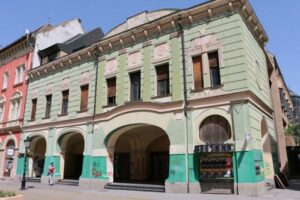
Source : https://visitsubotica.rs
It was built 1857, it was renovated 1886 by architect Gisfor Cube with evidence Eclecticism and operated as an inn with owner Andrewas Lichtnecthe.
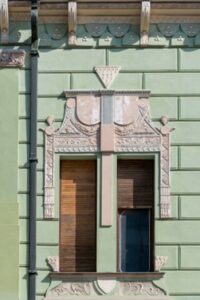
Source : https://visitsubotica.rs
The 1904 it was rebuilt by the famous local architect Titus (Tit) MaCforgeÆ (1851-1919), who added elements of Hungarian Art Nouveau and Art Nouveau Munich. the 1985-6 the facade was renovated while the rest of the building, to the street Vuk Karadzic, demolished and rebuilt like the original with Hungarian elements Art Nouveau. For many years it was his headquarters JNA (Yugoslav People's Army). Address: Promenade 3 & Vuk Karadzic
- WarÆ Palace
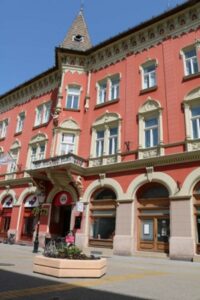
Source : https://visitsubotica.rs
The WarÆ Palace constructed in 1893 by the builder from Budapest, Janos Jedlička for the military (a soldier) Bajaj women, as rental housing. The characteristic red building, across the National Theater, has architectural elements of French Renaissance. Address: Promenade 1
- Smashing Bottle
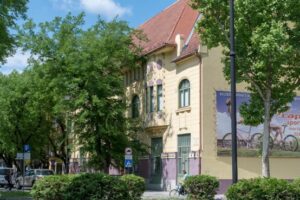
Source : https://visitsubotica.rs
The palace Dömötör (today Primary school Museum) built the 1906 from the brothers Jfromzef Vongfrom (1877–1947) and Lonslfrom Vongfrom (1875–1933), for the town pediatrician, Dömötör (Demeter) Miska (1868–1944).
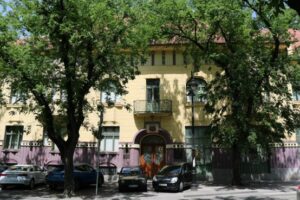
Source : https://visitsubotica.rs
Hungarian architects used decorative elements that refer to Darmstadt Art Nouveau. Address: Synagogue Square 3, https://gradskimuzej.subotica.rs.
- Gereb House
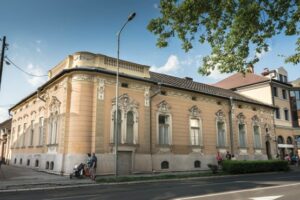
Source : https://visitsubotica.rs
The Gereb House (today Gallery «Dr. Vinko Perčić») constructed in 1894 by architect Jakab Dezső (1864-1932), for the city attorney Mihalj Gereb. Details were added later Neo-Baroque, and was the home of Subotica's doctor and art collector Vinko Perčić (1911-1989).
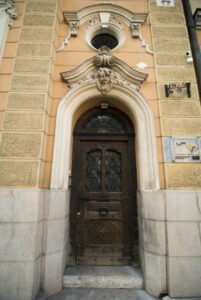
Gallery «Dr. Vinko Percic»– Source : https://visitsubotica.rs
From 2006 belongs to Protected Cultural Monuments of Subotica. Address: Maxim Gorky 22
- Yellow House Subotica
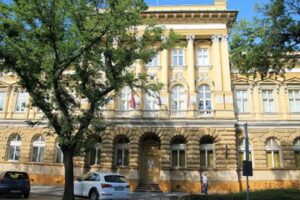
Source : https://visitsubotica.rs
The Yellow House (Serbian The yellow house) (today Faculty of Education Education) built between 1880-3 by renowned architect, Tit Mačković (1851-1919) for Savings bank of the National Bank of Subotica, in style Neo-Renaissance. According to the Second P.P. it was the headquarters of the special police of the Hungarian army and was used as a prison and a place of torture.
belongs to Protected Cultural Monuments Of Extreme Importance. Address: Strosmajerova 11
- Former General Credit Bank of Hungary
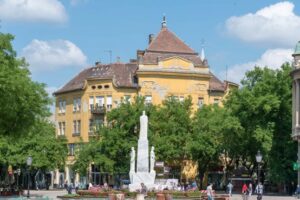
Source : https://visitsubotica.rs
The building was designed in 1911 by architect Alfréd Hajós (1878 – 1955) with elements of the movement Vienna Secession, for Bank of Hungary. belongs to Protected Cultural Monuments Excellent Important. Address: Republic Square 2, Subotica.
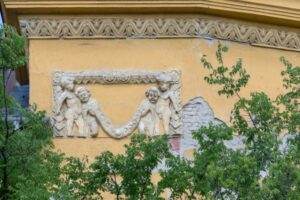
Source : https://visitsubotica.rs
- Municipal library Subotica
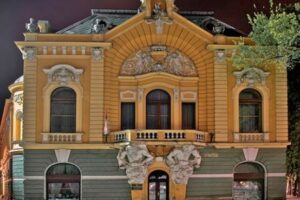
Source : https://www.subotica.com
The corner building of the former National Casino (today Municipal library) built the 1896 by Ferenc Raichle (1869-1960), at the location of the family home Skenderovic. With evidence Neo-Baroque in his spirit Eclecticism the entrance with the two atlases stands out, the sculptor Edo Telč. belongs to Cultural Monuments of Outstanding Importance city's. Address: Cara Dusana 2
The Hungarian architect Ferenc Raichle draw it too Raichle Palace (Ferenc Rajhl Park 5).
- Lazar Mamužić Palace
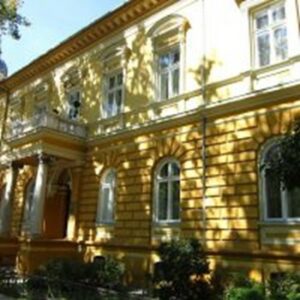
The palace was built between 1891-2, for Lazar Mamužić (1847- 1916), Mayor of Subotica (1884-1902). It is one of the most important works of the local architect, Titus Mackovic (1851-1919). Address: Ferenc Rajhl Park 7, & Đura Đakovića
- Simeon Leović Palace
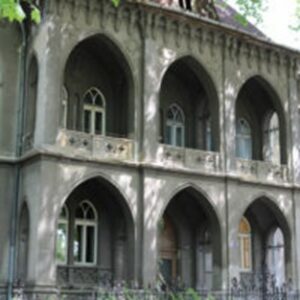
The Simeon Leović Palace it was the residence of the notary of the city, Simeon Leovic. It was designed 1893 by the famous Hungarian architect, It's over Lechner (1845-1914) and his partner, Gyula Pártos (1845-1916). The Simeon Leović Palace, it is a modest building with the basic elements of Hungarian architecture. Address: Ferenc Rajhl Park 11.
THE MODERN CITY SATURDAY
OR Subotica it is an important city of its autonomous province Vojvodina Steve. Serbia, in the distance 10 km from the Hungarian border.
OR Vojvodina located in North Bačka, and has capital the Novi Sad.
The lake Burn, 8 km Α. of Subotica, it is considered one of the most beautiful lakes in Serbia, and every year the city hosts the "Palić Wine Festivities», with events at the convention center, Grand Terrace.
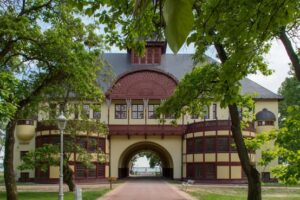
Source : https://visitsubotica.rs
The Grand Terrace, with evidence Vienna Secession, designed in 1912 by the Hungarian architects Marcell Comor (1868-1944) and DezsHe Jakab (1864-1932), who also designed the town hall and Synagogue of Subotica. Address: Obala Lajoš Vermeš bb, Burn.
